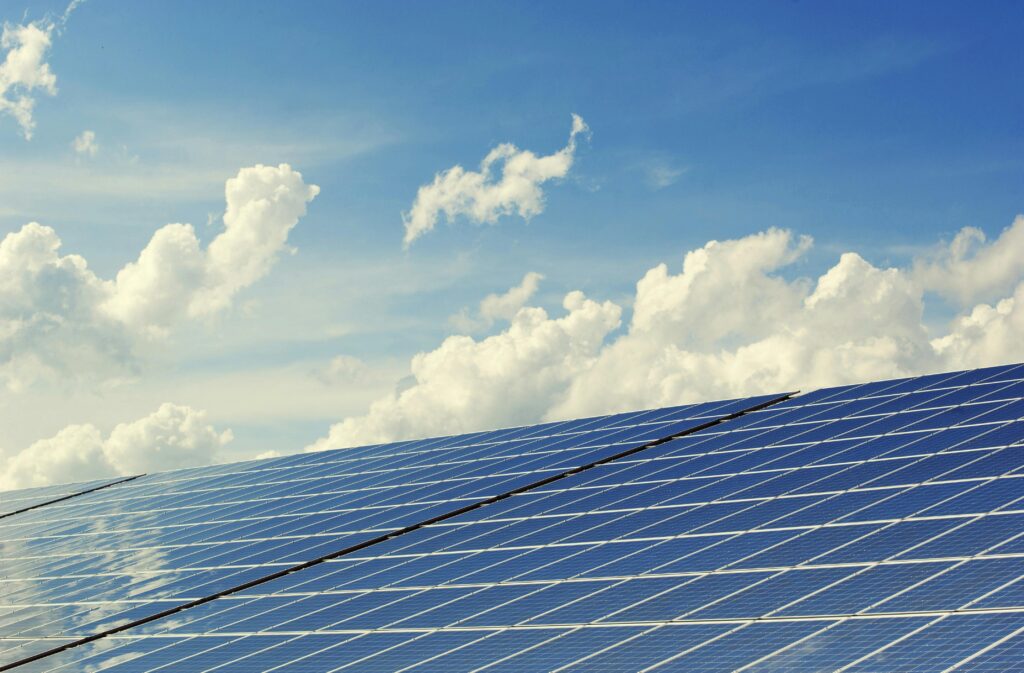
Introduction
As the world shifts towards sustainable energy, solar photovoltaic (PV) systems have emerged as a key solution to reducing carbon footprints and achieving energy independence. These systems harness sunlight to generate electricity, offering reliable and cost-effective alternatives to traditional power sources.
Solar PV systems come in different configurations depending on their application and connectivity. The three main types include:
- Grid-Connected Solar PV Systems
- Off-Grid (Stand-Alone) Solar PV Systems
- Hybrid Solar PV Systems
Each of these systems has unique features, advantages, and ideal use cases. Let’s explore them in detail.
1) Grid-Connected Solar PV Systems
Also known as on-grid or utility-interactive systems, these setups are directly linked to the electricity grid. The primary function of a grid-connected PV system is to generate solar power, which is then converted from direct current (DC) to alternating current (AC) using an inverter, allowing it to be fed into the electrical grid.
How It Works:
- Solar panels generate DC power from sunlight.
- A DC-DC converter may be used to regulate the voltage.
- The inverter converts DC power into AC power, matching the grid’s voltage and frequency.
- A bi-directional meter measures the power supplied to and drawn from the grid.
- During peak sunlight hours, excess electricity can be exported to the grid in exchange for credits (net metering).
- When solar production is low (e.g., at night), power is drawn from the grid.
Advantages:
✔ No need for expensive battery storage.
✔ Lower upfront costs compared to off-grid systems.
✔ Potential income through feed-in tariffs or net metering.
✔ High system efficiency due to direct grid integration.
Best Suited For:
🏠 Residential and commercial buildings with stable grid access.
🏢 Urban and industrial setups looking to reduce electricity costs.
2) Off-Grid (Stand-Alone) Solar PV Systems
Off-grid systems are completely independent of the electricity grid and rely on solar panels, battery storage, and inverters to supply power 24/7. These systems are essential in remote areas where grid connectivity is unavailable or unreliable.
How It Works:
- Solar panels generate DC electricity.
- A charge controller regulates the voltage and protects the battery from overcharging.
- Batteries store energy for nighttime or cloudy days.
- An inverter converts stored DC power into AC power for running household or industrial appliances.
Types of Off-Grid Systems:
- DC-Only Systems: Used for small applications such as LED lighting and water pumps.
- AC Systems: Requires an inverter to power standard home or office appliances.
Advantages:
✔ Complete energy independence.
✔ Reliable power in remote areas.
✔ No electricity bills.
Challenges:
⚠ Requires battery storage, increasing system costs.
⚠ Energy supply depends on weather conditions.
⚠ System sizing must be precise to avoid power shortages.
Best Suited For:
🏡 Rural homes and farms without grid access.
🏞 Remote telecom towers and research stations.
🚢 Isolated resorts and eco-friendly lodges.
3) Hybrid Solar PV Systems
Hybrid systems combine solar energy with other power sources such as diesel generators, wind turbines, or battery storage. These setups ensure reliable electricity even when sunlight is insufficient or grid power is unstable.
How It Works:
- Solar panels generate DC electricity.
- A maximum power point tracker (MPPT) optimizes power output.
- A battery bank stores excess solar energy.
- A smart energy management system (EMS) balances power sources.
- Additional energy sources (e.g., wind turbines or diesel generators) supplement power when needed.
Advantages:
✔ Higher reliability and energy security.
✔ Reduced dependence on diesel generators, lowering fuel costs.
✔ Flexible design for both residential and industrial applications.
Challenges:
⚠ Higher installation costs due to multiple power sources.
⚠ Requires advanced system management for efficiency.
Best Suited For:
🏭 Industrial and commercial applications needing consistent power.
🌍 Remote areas with unreliable grid access (hospitals, telecom stations).
🚢 Maritime and military applications requiring energy resilience.
Final Thoughts
Solar photovoltaic systems offer versatile solutions for energy generation, whether as grid-tied, off-grid, or hybrid systems. The right choice depends on location, energy needs, and budget.
✔ If you have grid access, a grid-connected system may be the most cost-effective.
✔ If you need energy independence, an off-grid system is ideal.
✔ A hybrid system offers the optimal combination of flexibility and reliability.
Want to design your own solar PV system? Our expert consultancy can help you optimize system efficiency, storage capacity, and cost-effectiveness. Contact us today!

